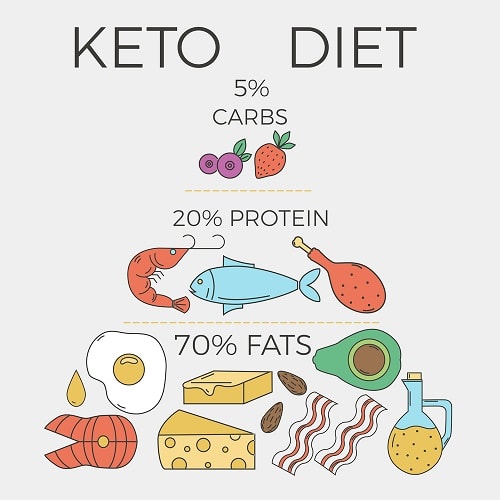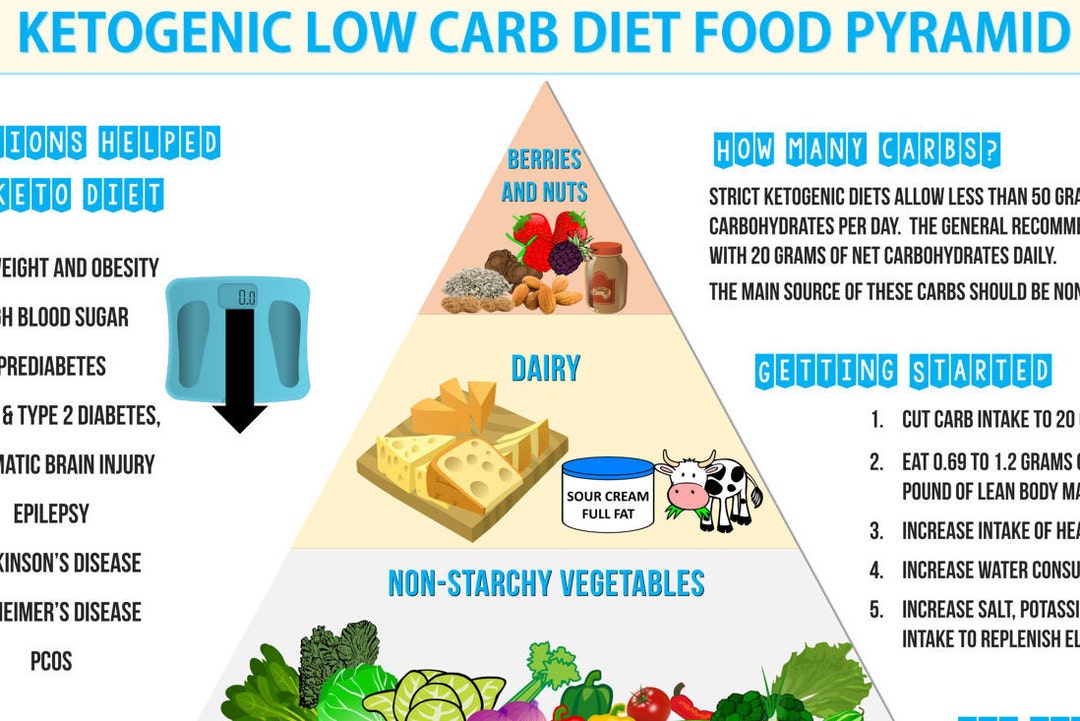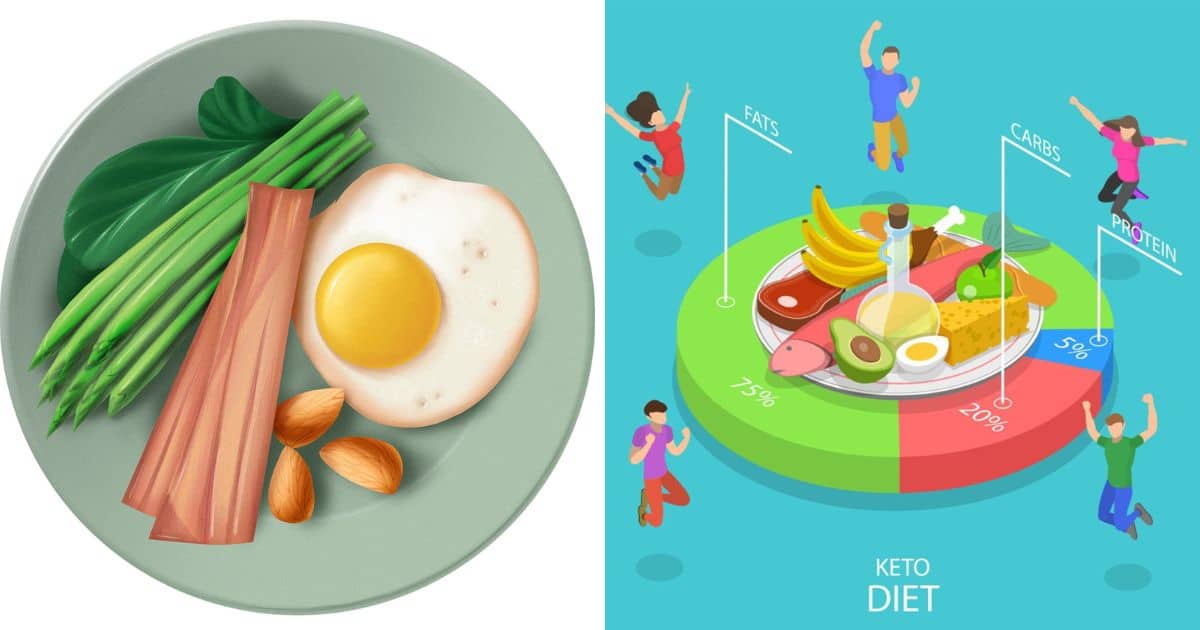Discover the secrets of the Keto diet in this beginner’s guide – everything you need to know to get started now!
Table of Contents
- Introduction to Keto
- What is the Keto Diet?
- Benefits of Keto Diet
- Keto Diet Plan for Beginners
- Typical Foods in a Keto Diet
- Creating Your Keto Diet Menu
- Keto Diet for Everyone
- How to Stay on Track with Your Keto Lifestyle
- Challenges of the Keto Diet
- Stories from Keto Beginners
- Conclusion
- Frequently Asked Questions (FAQs)
Introduction to Keto
Welcome to the world of keto! Have you ever heard of the keto diet or wondered what living a keto lifestyle entails? Well, let’s dive in and find out more about this popular way of eating. The keto diet has gained a lot of attention because it’s not like other diets you may have heard of.
Living a keto lifestyle means making specific choices about what you eat to help your body work in a different way than it normally does. By following the keto diet, you can experience some amazing changes in your body and how you feel.
What is the Keto Diet?
The keto diet, short for ketogenic diet, is a way of eating that focuses on consuming foods low in carbohydrates and high in fats. Unlike other diets, the keto diet aims to put your body into a metabolic state called ketosis. Ketosis is when your body burns fat for fuel instead of carbohydrates. This process can lead to weight loss and other health benefits.
The Science Behind Keto
When you eat foods high in carbohydrates, your body typically uses those carbohydrates as its main source of energy. However, on the keto diet, by drastically reducing your carbohydrate intake and replacing it with fats, your body switches to burning fat for energy instead. This shift in energy source is what triggers ketosis.
Benefits of Keto Diet
Have you ever wondered why the keto diet is becoming so popular? Well, let me tell you about some amazing benefits that come with following a keto lifestyle! When you start eating the keto way, you may notice some fantastic changes in your body.

Image courtesy of via Google Images
The Science Behind Keto
One of the cool things about the keto diet is how it helps your body burn fat. Instead of using carbs for energy, like many other diets, keto switches things up. By eating lots of healthy fats and very few carbs, your body enters a state called ketosis. In ketosis, your body turns to burning fat for fuel, which can help you lose weight and feel more energized.
Following the keto diet can lead to amazing benefits. Some kids find they have more energy throughout the day, which is perfect for keeping up with school, sports, and activities. Others notice that their skin looks clearer and healthier. Imagine feeling great and looking awesome, all thanks to the keto diet!
By incorporating the keto diet into your lifestyle, you can experience these fantastic benefits and improve your overall well-being. Give it a try and see the positive changes it can bring to your life!
Keto Diet Plan for Beginners
Starting a new diet can be intimidating, but the keto diet plan for beginners is simpler than you may think. Let’s break it down into easy steps to help you get started on your keto journey.
The Components of a Keto Diet Plan
When following a keto diet plan for beginners, the focus is on eating foods that are high in fat, moderate in protein, and very low in carbohydrates. This helps your body enter a state called ketosis, where it burns fat for fuel instead of carbohydrates.
Meal Planning Made Easy
To create your keto diet plan menu as a beginner, start by including foods like avocados, nuts, seeds, cheese, eggs, and plenty of green vegetables. These foods are not only delicious but also help keep you feeling full and satisfied.
Planning your meals ahead of time can make it easier to stick to your keto diet plan. Try preparing your lunches and snacks the night before so you have healthy options readily available when hunger strikes.
Make sure to drink plenty of water and consider incorporating some low-carb, keto-friendly snacks into your day for those moments when you need a little extra boost.
Remember, the keto diet plan for beginners is all about finding a balance that works for you. Don’t be afraid to experiment with different foods and recipes to keep things interesting and enjoyable.
Typical Foods in a Keto Diet
When following a keto diet, it’s essential to understand which foods you can eat to keep your body in a state of ketosis. Ketosis is when your body burns fat for fuel instead of carbohydrates. Here are some typical foods you’ll find in a keto diet menu:

Image courtesy of via Google Images
1. Healthy Fats
Healthy fats are a staple in a keto diet. Foods like avocados, nuts, seeds, and olive oil are excellent sources of healthy fats. They help keep you feeling full and satisfied while providing essential nutrients for your body.
2. Protein
Protein is important for muscle growth and repair. On a keto diet, you can enjoy foods like chicken, fish, eggs, and tofu. These foods will help you stay full and give you the energy you need to keep going throughout the day.
3. Low-Carb Vegetables
Low-carb vegetables are rich in vitamins, minerals, and fiber. Vegetables like spinach, broccoli, cauliflower, and zucchini are great options on a keto diet. They add color and flavor to your meals while keeping your carb intake in check.
4. Berries
Berries are low in carbs and high in antioxidants. Foods like strawberries, blueberries, and raspberries can satisfy your sweet tooth without kicking you out of ketosis. They make a delicious addition to your keto-friendly desserts.
By incorporating these typical foods into your keto diet menu, you can enjoy a variety of delicious meals while reaping the benefits of ketosis. Remember to focus on whole, nutrient-dense foods to fuel your body and mind on your keto journey.
Creating Your Keto Diet Menu
Now that you understand the basics of the keto diet and have learned about some of the typical foods involved, it’s time to create your own keto diet menu. Planning your meals ahead of time can help you stay on track and ensure you have everything you need to stick to your new lifestyle. Below are some tips to help you get started:
Meal Planning Tips for Beginners
1. Begin by selecting a variety of keto-friendly foods that you enjoy. This can include meats, fish, eggs, low-carb vegetables, cheese, and healthy fats like avocados and olive oil.
2. Plan your meals for the week ahead. This can help you avoid last-minute decisions that may steer you off course. Consider preparing some meals in advance to save time during the week.
3. Keep track of your carb intake to ensure you’re staying within the recommended range. Most keto diets aim for about 20-50 grams of net carbs per day.
4. Experiment with different recipes to keep your meals interesting and flavorful. There are plenty of resources online for delicious keto-friendly dishes.
5. Don’t forget about snacks! Keep some keto-friendly snacks on hand, such as nuts, seeds, or sugar-free jerky, to help curb cravings between meals.
By following these meal planning tips, you’ll be well on your way to creating a balanced and satisfying keto diet menu that works for you. Remember, the key to success on the keto diet is finding what works best for your body and lifestyle.
Keto Diet for Everyone
When it comes to following a keto diet, it’s essential to understand that not everyone’s body reacts the same way to the changes in food intake. For individuals with diabetes, adjustments may need to be made to ensure their health and wellbeing are taken into consideration.

Image courtesy of via Google Images
The Importance of Keto Adaptation for Diabetics
Diabetics need to work closely with their doctors or nutritionists when starting a keto diet. This is because the drastic reduction in carbohydrates can have a significant impact on blood sugar levels, which need to be carefully monitored. Keto adaptation for diabetics may involve more frequent blood sugar checks and potentially adjusting medication doses to prevent hypoglycemia.
Furthermore, diabetics may need to prioritize certain types of fats and proteins while following a keto diet to maintain stable blood sugars. It’s crucial for them to listen to their bodies and make necessary adjustments to ensure they stay healthy while on the diet.
Overall, the keto diet can be beneficial for individuals with diabetes, but it requires careful planning and monitoring to ensure it is safe and effective. Always consult with a healthcare professional before making any significant changes to your diet, especially if you have diabetes.
How to Stay on Track with Your Keto Lifestyle
Starting a keto lifestyle can be exciting, but it’s important to stay on track to see results. Here are some tips to help you stick to your new way of eating and make it an enjoyable journey.
Set Realistic Goals
Begin by setting achievable goals for yourself. Maybe you want to lose a certain amount of weight or have more energy throughout the day. By having clear objectives, you’ll be more motivated to stay committed to your keto lifestyle.
Plan Your Meals
Meal planning is key to success on the keto diet. Take some time each week to plan out your meals and snacks. This will help you stay organized and ensure you have keto-friendly options readily available.
| Keto 101: Easy Diet Plan Intro | |
|---|---|
| Meal | Food Choices |
| Breakfast | Eggs, avocado, bacon, spinach |
| Lunch | Grilled chicken, broccoli, cheese, olive oil |
| Dinner | Salmon, asparagus, butter, cauliflower rice |
| Snacks | Almonds, cheese sticks, celery with nut butter |
Stay Consistent
Consistency is key when following the keto lifestyle. Try to stick to your meal plan as much as possible and resist the temptation to veer off course. Over time, your body will adapt to the new way of eating, making it easier to stay on track.
Get Creative in the Kitchen
Experiment with different keto recipes and get creative in the kitchen. This can make your meals more exciting and help prevent boredom with your food choices. Don’t be afraid to try new ingredients and cooking techniques!
Stay Hydrated
Hydration is important for overall health and can also help you stay on track with your keto lifestyle. Make sure to drink plenty of water throughout the day and consider adding electrolytes to your routine if needed.
Find Support
It can be helpful to connect with others who are also following the keto lifestyle. Look for online communities, support groups, or friends who can offer encouragement and advice. Having a support system can make a big difference in your journey.
Challenges of the Keto Diet
Embarking on a keto diet journey can be exciting, but it also comes with its fair share of challenges. Let’s take a look at some common obstacles you might encounter and how to overcome them.

Image courtesy of via Google Images
Keto Flu
One of the biggest hurdles when starting a keto diet is the infamous keto flu. As your body adjusts to burning fat instead of carbs for fuel, you may experience symptoms like fatigue, headaches, and irritability. Drinking plenty of water, getting enough electrolytes, and ensuring you’re eating enough fats can help alleviate these symptoms.
Cravings
Missing your favorite carb-loaded treats can be tough, especially in the beginning. Cravings for sugary or starchy foods are normal, but staying strong and finding keto-friendly alternatives can help curb those cravings. Remember, it’s about finding balance and enjoying a wide variety of delicious foods within the keto guidelines.
Social Challenges
Attending gatherings or parties where carb-heavy dishes are the star can make sticking to your keto plan challenging. It’s essential to communicate your dietary choices with friends and family so they can support you. Bringing your own keto-friendly dish to share can help ensure you have something to enjoy while still partaking in the social aspect of the event.
Meal Planning
Planning your meals ahead of time is crucial for success on a keto diet. It can be overwhelming to figure out what to eat, especially when you’re just starting. Taking the time to research recipes, create a shopping list, and prep meals in advance can make sticking to your keto plan much easier.
Overcoming these challenges may not be easy, but with dedication and a positive mindset, you can successfully navigate them on your keto journey. Remember, it’s about progress, not perfection, so be kind to yourself along the way.
Stories from Keto Beginners
When Sarah decided to try the keto diet plan for beginners, she was a little nervous. But with the support of her family, she started swapping out carbs for healthy fats and protein. Within a few weeks, she noticed more energy and felt proud of her progress.
Discovering New Favorite Foods
Alex, a beginner on the keto diet, was worried about missing his favorite snacks. However, with some creativity, he found low-carb alternatives that satisfied his cravings. From delicious keto-friendly desserts to savory snacks, Alex realized he could still enjoy tasty foods while sticking to the keto lifestyle.
Celebrating Small Victories
Emily, who started the keto diet for beginners to feel healthier, celebrated every milestone no matter how small. Whether it was reaching a weight loss goal or trying a new keto recipe, she learned to appreciate her progress and stay motivated on her journey.
These stories show that with determination and a positive attitude, anyone can successfully begin their keto diet plan for beginners and enjoy the benefits of this healthy lifestyle.
Conclusion
In conclusion, the keto diet is a unique way of eating that focuses on consuming high-fat, moderate protein, and very low-carb foods. By following this approach, your body transitions into a state of ketosis where it burns fat for energy instead of carbohydrates. This lifestyle change can lead to increased energy levels, clearer skin, and other potential health benefits.

Image courtesy of via Google Images
If you’re considering starting a keto diet, remember to keep it simple and focus on whole, nutrient-dense foods. Planning your meals ahead of time and staying consistent with your food choices can help you stay on track with your keto lifestyle. It’s important to listen to your body and make adjustments as needed, especially if you have specific health conditions like diabetes.
Don’t be discouraged by any challenges you may face along the way. Many beginners have successfully embraced the keto diet and have seen positive results. With dedication and a positive mindset, you can overcome any obstacles and thrive on your keto journey.
Frequently Asked Questions (FAQs)
What is the keto diet?
The keto diet, short for ketogenic diet, is a way of eating that focuses on high-fat, moderate-protein, and very low-carbohydrate foods. This unique way of eating helps your body burn fat for energy instead of carbohydrates.
How does the keto diet work?
When you eat very few carbs and only moderate amounts of protein, your body goes into a state called ketosis. During ketosis, your body breaks down fats into molecules called ketones, which it then uses as its main source of energy.
Is the keto diet good for everyone?
While the keto diet can be beneficial for many people, some individuals, like those with diabetes, might need to make adjustments to follow a keto plan safely. It’s essential to consult with a healthcare provider before starting a new diet, especially if you have any underlying health conditions.
What can I eat on a keto diet?
On a keto diet, you’ll focus on eating foods like meats, fish, eggs, high-fat dairy products, nuts, seeds, and low-carb vegetables. You’ll want to avoid foods high in carbohydrates, such as bread, pasta, rice, and sugary treats.
Is the keto diet hard to stick to?
For some people, the keto diet can be challenging to stick to at first, especially if they’re used to eating a lot of carbohydrates. However, with proper planning, support, and delicious keto-friendly recipes, sticking to your keto lifestyle can become more manageable and even enjoyable over time.





